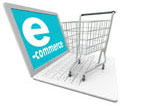Quarter 4, 2012
Calendar Marketing

Boost ROI with Creative Calendar Marketing
Calendar marketing can be one of the best ways to build brand recognition, gather leads, or make sales. Distributing free calendars to your target audience is a nice goodwill gesture that also puts your company front and center 365 days a year. This can make them a very cost-efficient part of your marketing mix. More than just distributing any calendar, you should know how to take advantage of calendar marketing to optimize your response rate and investment.
The following calendar marketing essentials will put you on the right track:
Market to your audience
The best marketing practices dictate that you should put your calendar in front of a well-defined, highly targeted audience for best results. Let's say you're an insurance agency that sells policies for a number of things: houses, cars, boats, motorcycles, businesses, etc. It's tempting to print a 12-month calendar that focuses on one of these areas each month. However, you would be much better off to print calendars for specific sub-niches: a sailboat/island travel calendar for sailboat enthusiasts, a classic motorcycle calendar for bikers or a functional business-marketing calendar for businesses. You can also reach a broader audience by creating a calendar with a common theme, such as a local sports team. The important thing to remember is that if you can engage your audience with your calendar, you'll double your efficiency without doubling your costs.
Promote yourself
Some companies print calendars with nothing but their logo and bland rows of dated squares and call it branding; however, calendars offer the perfect opportunity to aggressively promote your products and services on a daily basis. Use icons and images to highlight special sales, discounts and events. If you sell seasonal products include seasonal checklists on the calendar. A hardware and home supply store, for example, might include a spring cleaning check list in April and a winter preparation check list in October. The goal is to help your customers think about what they need and to tell them you can provide it. Include special offers, discounts and calls to action throughout your calendar; and give your audience a heads-up the month before with a small, yet prominent, upcoming events box.
An eye for ROI
Just because most businesses think that calendars are only good for branding doesn't mean you can't harness the power of a daily message as a direct-marketing piece. The bottom line is the return on investment and, though your calendar branding efforts aren't easily measured, direct-marketing methods are. Include cut-out coupons each week or month for your specials so you can track your returns on investment. To increase returns on investment from the onset, you should also print your calendars in volume. Print as many as you'll distribute in one run to keep your cost per calendar low, thus increasing your profit per sale. When it comes to calendar marketing, your job is to think outside the boxes. Give your audience an aesthetically pleasing and useful calendar that has value, and you'll boost brand recognition and your return on investment.
The Grinch Effect: 7 Holiday ID Theft Prevention Tips
 |
It’s officially the joyous holiday shopping and celebration season. Unfortunately, the holidays also attract scammers and data thieves. I call this The Grinch Effect — manipulating or stealing from innocent people while they’re busy celebrating. Unlike the Grinch, fraudsters don’t have a last-minute change of heart. They’ll rob you blind and move on to the next unsuspecting victim. To make sure you don’t become a target, use these |
 |
1. PROTECT YOUR HOME AND OFFICE
Holiday parties are a major source of data theft. Opportunists are looking for smartphones, iPads, financial documents, checkbooks, credit cards, disks, laptops, thumb drives, sensitive trash or mail, purses, wallets and other sources of identity. Statistics suggest that identity theft is committed by someone the victim knows approximately 30% of the time. SOLUTION |
 |
2. STOP DEBIT & CHECK FRAUD
With a debit card, money is withdrawn directly from your bank account. When fraud occurs, it’s more difficult to get it back. SOLUTION |
 |
3. PROTECT YOUR IPAD, SMARTPHONE, LAPTOP AND PURSE
Malls, stores, restaurants and cafés are the perfect environments for thieves to make off with your goodies while you shop, dine or relax. It only takes a second to pick up a purse or briefcase when you’re getting a refill. SOLUTION |
 |
4. DON’T SHOP ONLINE USING PUBLIC WI-FI HOT SPOTS
Hackers can easily tap into Wi-Fi connections at public hot spots to steal your identity. This can be especially dangerous when you’re making purchases with your credit card on unsecure connections. SOLUTION |
 |
5. WATCH OUT FOR HOLIDAY SCAMS (ESPECIALLY ON FACEBOOK & EMAIL)
Because we tend to be more generous during the holidays, scammers ask for donations, promising free iPads, claim to be a friend in need or ask you to click on something out of character. Don’t fall for it. SOLUTION |
 |
6. CATCH ACCOUNT FRAUD QUICKLY
Sometimes there is no possible way to prevent identity theft. As a result of living in the information economy, your identity will occasionally be compromised. SOLUTION |
 |
7. PROTECT YOUR BUSINESS
Sometimes there is no possible way to prevent identity theft. As a result of living in the information economy, your identity will occasionally be compromised. SOLUTION |


